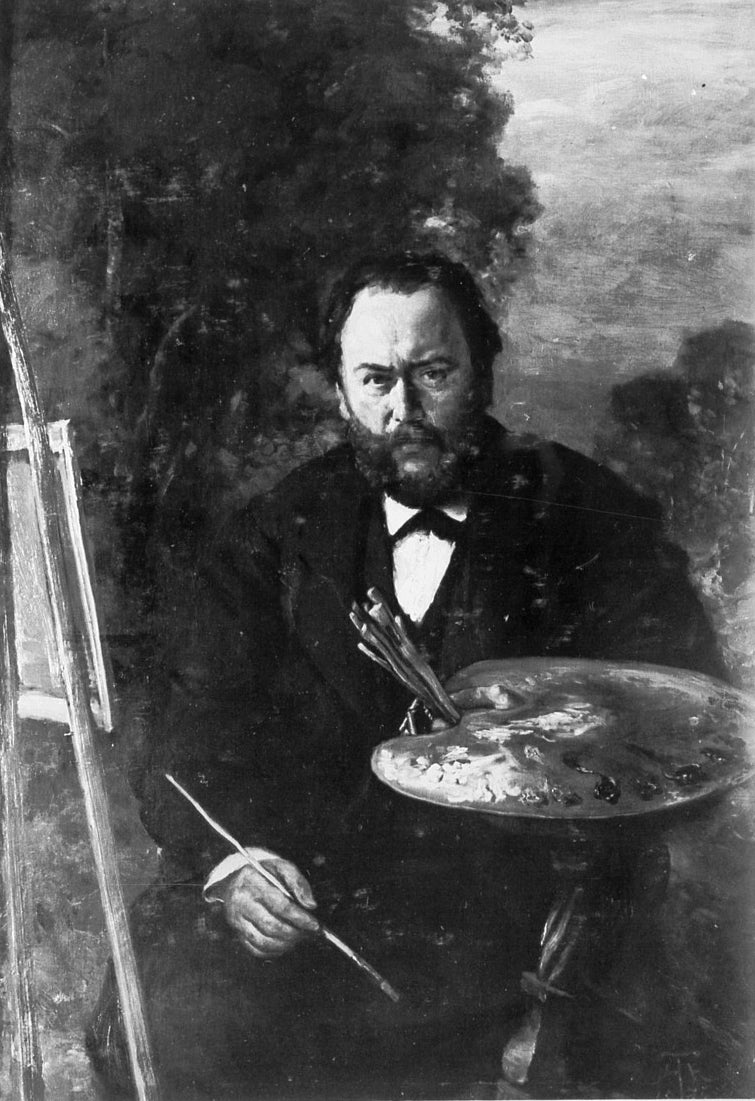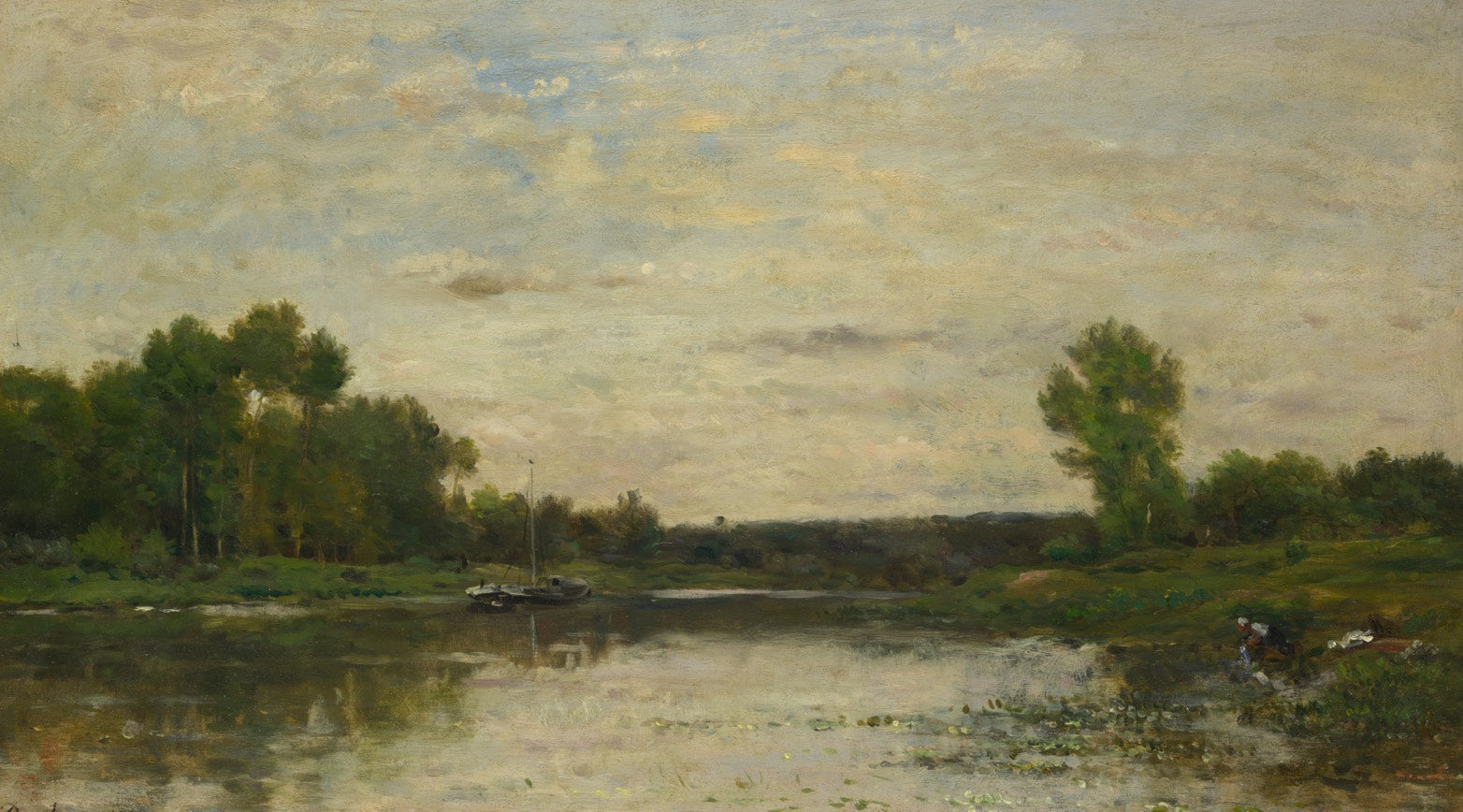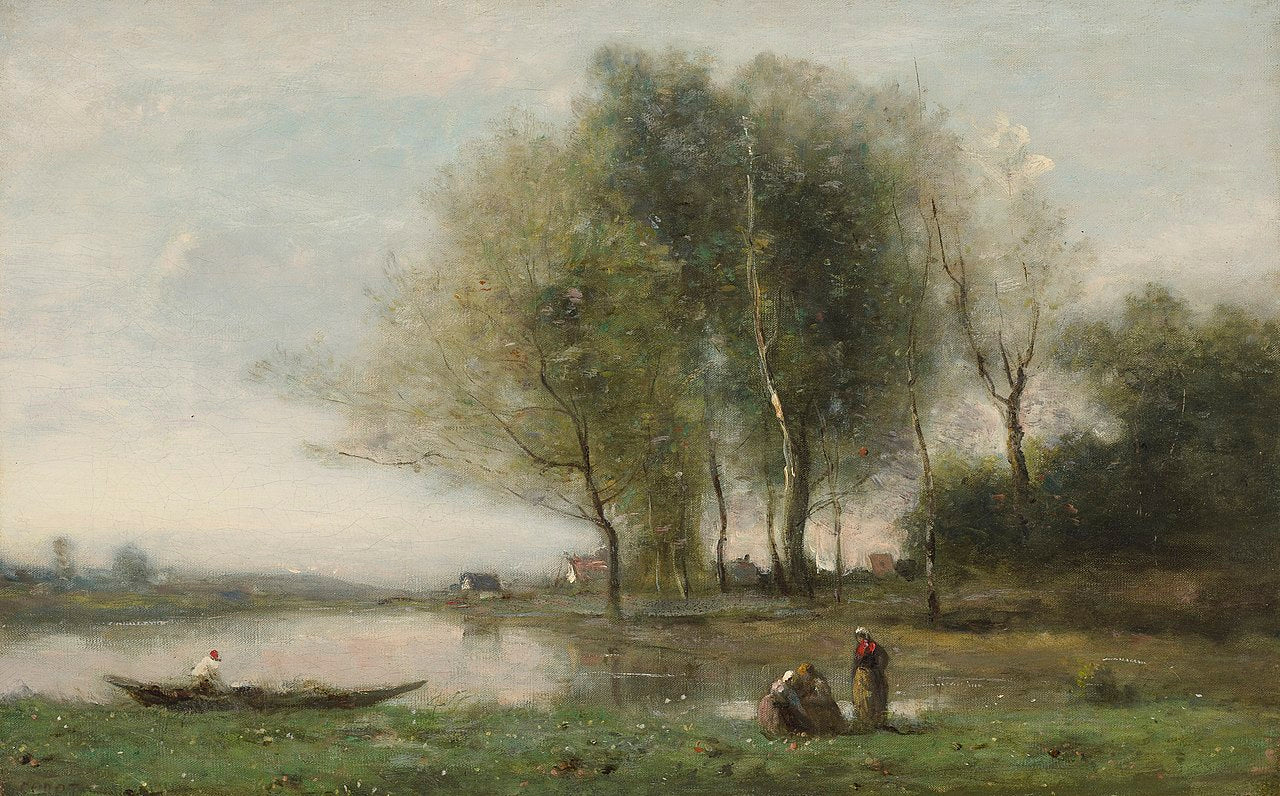Karl Peter Burnitz was an accomplished German landscape painter working predominantly in oils and watercolours. He trained in Paris under the tutelage of Camille Roqueplan and Emile Labinet and took heed from the Barbizon School of painters, such as Jean-Baptiste Camille Corot, Théodore Rousseau and Charles Daubigny. His works are held in numerous public collections.

Sketching diligently amid the eclectic scenery of Fontainebleau, stood a young German artist named Karl Peter Burnitz. He’d travelled from Frankfurt, abandoned a legal career, and immersed himself in new ideologies. The forest was alive around him - buzzing with flamboyant Frenchmen. Radical free thinkers escaping the confines of industrialised Paris. They were known collectively as the ‘Barbizon School’ and left a lasting impression on the young man’s mind.
Burnitz was raised by his uncle Rudolph, a well-respected architect, highly regarded for his neoclassical designs. He furnished him with a sterling education, paving the way for a lucrative career. It’s interesting to consider whether young Burnitz had artistic leanings as a boy. It’s apparent that he could draw and would’ve been surrounded by Rudolph’s architectural designs. Was he instructed to seek gainful employment and dissuaded from following his heart?
In 1849, following four years of study in Berlin, Burnitz began working as a lawyer. Tackling the rigours of clients and paperwork while still carrying a torch for a different cause. One can imagine him taking a sketchbook to work, perhaps some watercolours. Visiting nearby parks between appointments. He continued this for three years.
By 1852, his uncle had died and he undertook a study trip to Algiers and Madrid. Here, he met with the painter Fritz Bamberger who was older and more experienced. Bamberger’s style was rooted in the romantic tradition, epic scenery and idealised views. He encouraged young Burnitz to follow his heart - pursue a career as a painter. Move to Paris.
Barbizon School
The same year, Karl Peter Burnitz arrived in the French capital. Leaving behind the formality of a legal career. He stayed for several years, visited the galleries, and mingled with the leading lights. He trained predominantly under Camille Roqueplan and Emile Labinet. The latter being a student of the eminent Corot. But also carefully studied those around him, particularly the artists working in Fontainebleau.
Théodore Rousseau and Charles Daubigny were particularly influential on his style. These, along with the other Barbizon painters, are regarded as the first to truly embrace working outside. They shunned the overly-starched regimen of the academic world in favour of painting from life - painting what they saw. It was artistically liberating.
Note the similarities between the three artists. Burnitz is closer to Daubigny but inspired by both. There’s a lack of contrivance and overblown romantic ideals. Simply a quiet view, rendered with feeling, in limited natural tones.

Charles-François Daubigny, View on the Oise (1873)

Théodore Rousseau, Château de Chantilly

Karl Peter Burnitz, Landscape, Fontainebleau
There’s a silvery quality to many of Burnitz’s works, a little reminiscent of Corot.

Jean-Baptiste Camille Corot, Arleux-du-Nord—Le Bord Des Clairs (c.1871)
Burnitz thrived in this melting pot of ideas and, despite his lack of formal artistic training, flourished during his time in France.
In 1857, he returned to Frankfurt and sought a similar environment in which to hone his skills. He’d brought back a passion for painting ‘en plein air’. Around him, most of his peers were rooted in the German tradition, working mainly from their studios in the shadow of Romanticism. Burnitz was unusual, a German who trained exclusively in Paris.
Kronberg Painters' Colony
During his time in Frankfurt, he befriended the artists Anton Burger and Jakob Fürchtegott Dielmann. They were members of a pioneering art colony in the rural area of Kronberg and convinced him to join them.
The picturesque area of Kronberg is situated at the foot of the Taunus mountain range and provides ample artistic inspiration. Around 60 artists painted there - seeking to remove themselves from the ever-advancing pace of the city. Kronberg was natural, authentic, untarnished. A perfect muse for the imagination.
But unlike the Barbizon School, there wasn’t a ‘house style’. Each artist developed their own approach, some looked back towards Romanticism, while others, like Burnitz, looked forward. As a result, the colony would debate regularly - numerous conversations taking place within the walls of Zum Adler, a traditional half-timbered guesthouse. The ale was flowing and the conversation surely heated. It’s said that he was instrumental in encouraging those around him to paint outdoors.
The critics were less favourable however and he received some harsh reviews. It wasn’t until many years later that his influence was justly recognised.
From here on, he continued to work in the same French-inspired style. Producing numerous shimmering landscapes to capture the picturesque environment around Taunus. Most of these reside in private collections but he’s also represented at several museums.
He was married in 1873 to Susanna Christiane Friederike Müller and the pair had three children. His son, Rudolf Hans Burnitz, also became a painter.
Public Collections
Städel Museum, Historisches Museum Frankfurt, Museum Wiesbaden, Nationalgalerie in Berlin.
Timeline
1824
Born in Frankfurt to Carl Friedrich Burnitz, a merchant, and Auguste Wilhelmine Burnitz (nee Salzwedel).
1833
Became an orphan and was cared for by his uncle, Rudolf Burnitz, an architect.
1843-1847
Studied law in Berlin.
1848
Travelled to Rome, Naples and Palermo, Italy.
1849
Practised as a lawyer in Frankfurt.
1852
Travelled to Algiers and Madrid.
Moved to Paris and undertook frequent trips to Fontainebleau.
Undertook study trips to Normandy and Burgundy.
1857
Returned to Frankfurt.
Travelled to Kronberg (joining the Kronberg painters' colony), Bavaria and the Black Forest.
1862
Lived in Frankfurt.
1868
Travelled to Paris.
1869
Awarded the gold medal at the International Art Exhibition in Munich.
1873
Shown at the Exhibition of the German Empire, Berlin.
Married Susanna Christiane Friederike Müller.
Birth of daughter, Helene.
1875
Birth of son Rudolf Hans Burnitz who also became a painter.
1877
Birth of daughter, Bertha.
1878
Appointed chairman of the Frankfurt Artists' Society.
1886
Died in Frankfurt.


